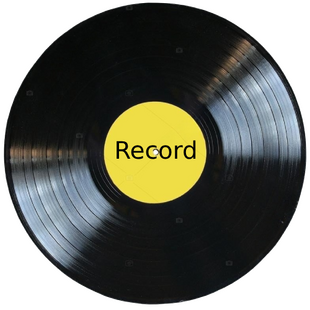Record

| |
| Record | |
| Developer | Bell Laboratory (phonograph) Gramophone Company (gramophone) Eva-Tone Soundsheets (Soundsheet) |
|---|---|
| Publisher | Various |
| Systems | ZX Spectrum, various |
| Released | Wax cylinder record: 1877 - 1916 Rubber records: 1890 - 1895 Shellac records: 1895 - 1948 Vinyl records: 1943 - present Flexi disc - 1962 - present |
| Added to Museum | See Flexi disc category |
A record, phonograph record, gramophone record, or vinyl record, or simply vinyl, is an analog sound storage medium.
Wax cylinder record
The first medium that was used to record and play back sound was a cylinder. In 1877, Thomas Edison invented the phonograph, which was the first device to play and record sound on wax cylinders. In 1887, Emile Berliner was granted a patent for the gramophone, which was described as using wax cylinders coated with an opaque substance, such as lampblack, or soot gathered from lamps, mixed with varnish.
Zinc and hard rubber records
In 1888, Emile Berliner used flat disk records made of zinc covered in wax to record and play back sound on the gramophone. By 1890, commercial recordings on flat disk records were manufactured out of hard rubber.
Shellac record
In 1895, shellac resin began being used as the material used to create flat disk records. By this point, the term phonograph and gramophone became largely a regional difference rather than technical, with phonograph being the common term in the United States largely due to the abandonment of the gramophone trademark in that region, and gramophone being the common term in the United Kingdom. Other regions varied between the terms in common usage.
Vinyl record
In 1943, media called vinyl records, which contained polyvinyl chloride, began to replace shellac. By 1949, vinyl became the standard material used to create records.
Flexi disc
In 1962, a record that would become commonly referred to as a flexi disc was introduced under the trademark of Soundsheet by the company Eva-Tone Soundsheets. This type of disk, also known as a phonosheet or sonosheet, used a thin, flexible vinyl sheet to record and play back audio. Due to their flexibility, they were packaged together with various mediums, such as magazines and music instruction books.